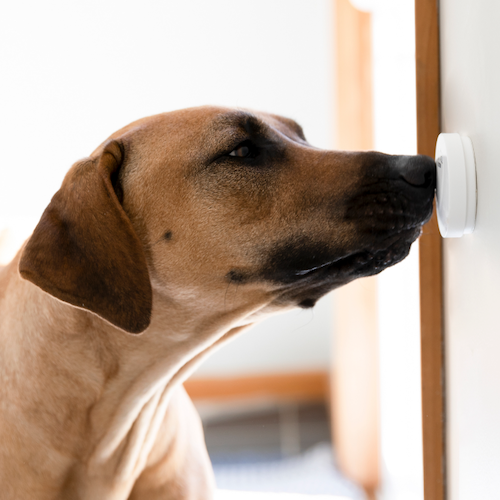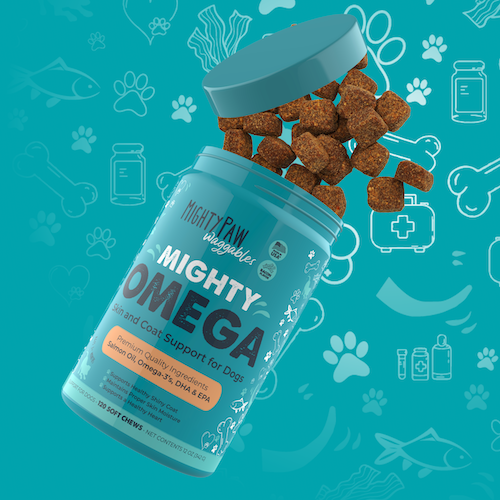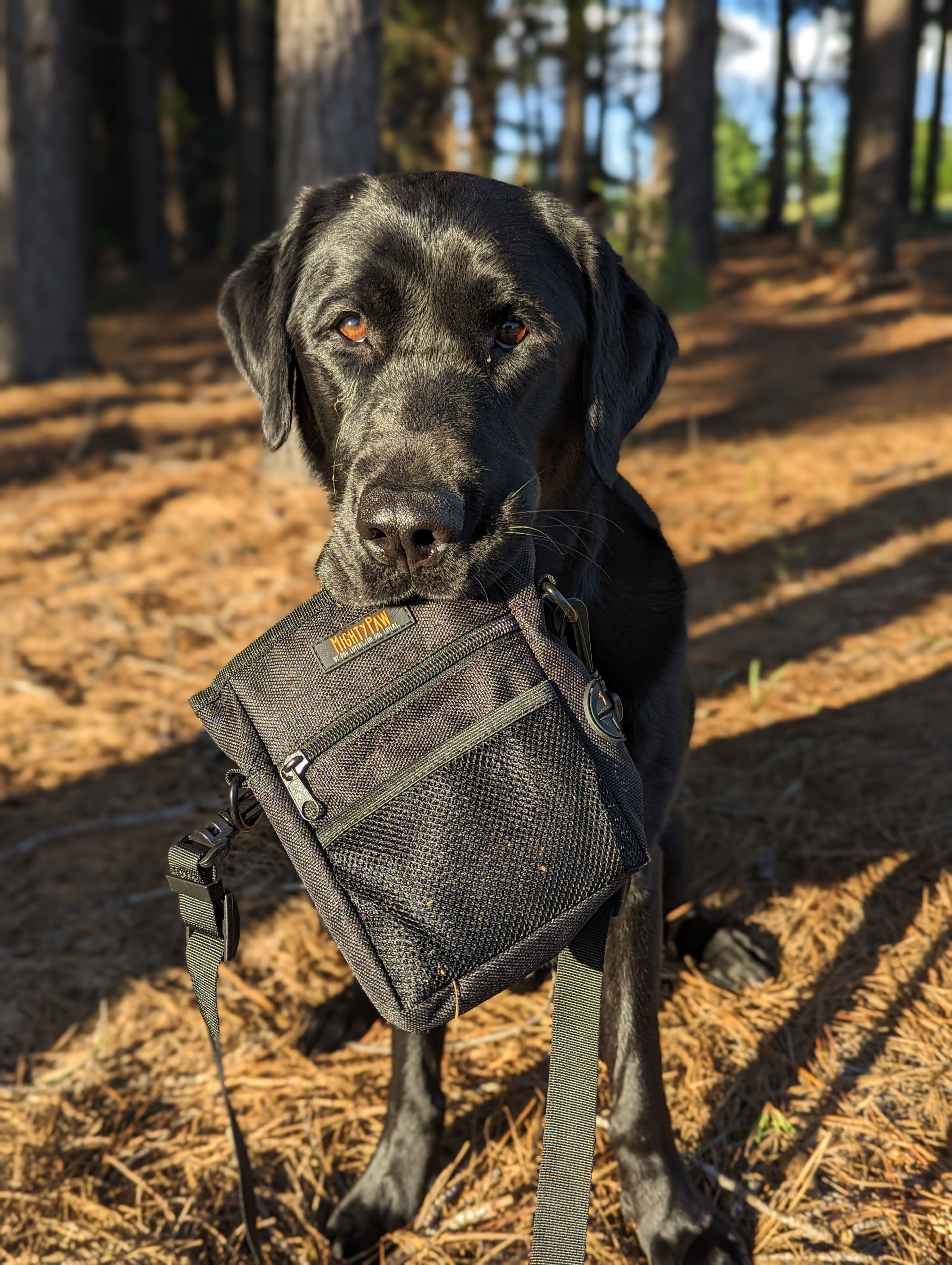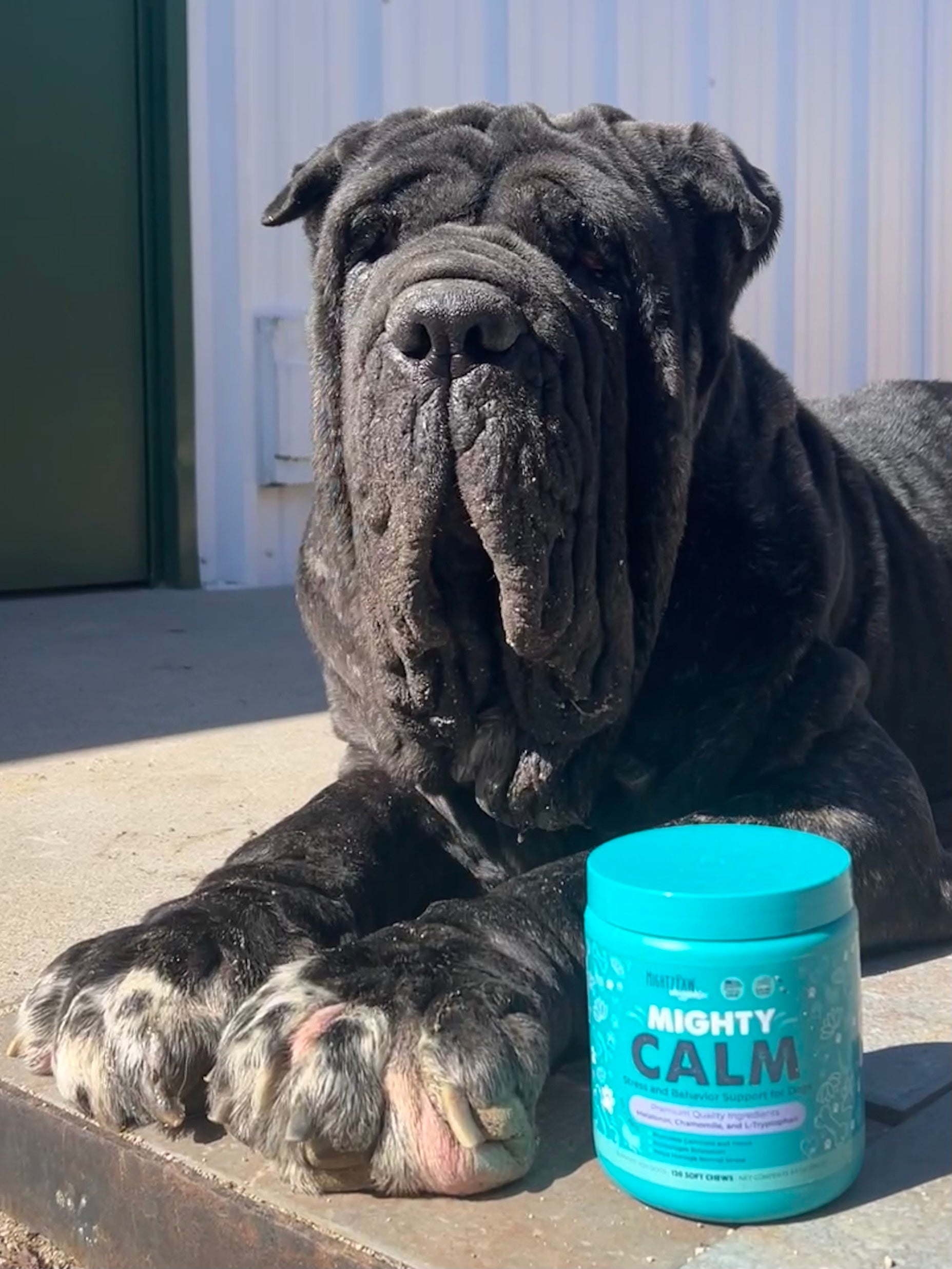For most of us, summer is our favorite time for more outdoor fun and adventure, but it also brings significant risks for our beloved pups' health.

We love nothing more than having our own Mighty Paw pups by our sides to enjoy every activity during the summer months -- and we know you do too.
But when temperatures soar on very hot days, how do we all make sure we're keeping our dogs safe so they can live these sweet days of summer to the fullest?
Let's talk about the "watch-outs" on these days and what we can do to keep our pups healthy and safe.
Understanding the risks of summer for dogs
Heat stroke
One of the most severe risks for dogs during summer is heat stroke. Unlike humans, dogs can't sweat to cool down. Instead, they pant, which is less effective in extreme heat. Recognizing the early signs of heatstroke, such as excessive panting, drooling, and lethargy, can be life-saving.
Heat stroke occurs when the body can no longer control its temperature: the body's temperature rises rapidly, the sweating mechanism fails, and the body is unable to cool down. When heat stroke occurs, the body temperature can rise to 106°F or higher within 10 to 15 minutes.
Heat stroke is a medical emergency; if your dog ever shows signs of it, contact your veterinarian immediately.
Signs of heat stroke and what to do
- Early warning signs
Heatstroke can escalate quickly in dogs. Early signs include excessive panting, drooling, and discomfort. More severe symptoms may include vomiting, diarrhea, and collapse. There are 3 stages to heat stroke, and the acceleration can be rapid: heat cramps, heat exhaustion, and then heat stroke.
If you do suspect heat stroke, move your dog to a cool area immediately.
- Immediate action
If your dog shows any signs of heatstroke, act immediately. Offer your dog cool (not cold) water to drink and wet your dog's body with room-temperature water. Avoid using ice or very cold water, as it can cause shock. Contact your veterinarian immediately (or get to an emergency vet).
- Preventive measures!
Prevention is key to avoiding heatstroke: Never leave your dog in a parked car, even for a short time. Ensure your pup has access to shade and water at all times, and avoid vigorous exercise or even going outside during the hottest parts of the day.
Dehydration

Dehydration can be another common issue during summer. Dogs need a lot of water to stay hydrated, especially when they're active. Symptoms of dehydration include dry gums, sunken eyes, and lethargy. Always ensure your dog has access to fresh water.
In the summer months, we often -- both dogs and humans -- burn excessive amounts of water in the heat. When it's not replaced, that's dehydration. For our dogs, dehydration occurs more quickly because they get hot more quickly and don't sweat.
A couple favorites to make it easier to keep your dog hydrated anywhere, anytime:
- Walk/travel dog water bottle - made with BPA-free, food-grade silicone for safe, convenient water on the go with your pup.
- Collapsible dog bowl set for travel - collapses flat for easy carrying and, of course, made with BPA-free, food-grade silicone to be dog-safe.
Sunburn & "heatburn"
Just like humans, dogs can get sunburned. Areas with less fur, such as the nose, ears, and belly, are more susceptible. Sunburn can lead to painful skin conditions and increase the risk of skin cancer. Applying dog-safe sunscreen can help protect your dog.
Heatburn on your dog's paws
A dog's sensitive paw pads can burn in as little as 60 seconds on pavement that becomes 125°F when the air temperature is only 77°F.
Hot asphalt can be up to 60°F hotter than the air temperature, so you can't judge if it's too hot for your dog just by air temperature. A simple way to test if pavement is too hot for your dog is to put the back of your hand on the ground for seven seconds. If it's too hot for you, it's too hot for your dog.
3 Safety tips for walking and exercising your dog in warmer weather

1) Time your walks
During the summer, it's best to walk your dog during early morning or late in the evening hours when the temperatures are cooler. Avoid walking during the peak heat hours of 10 AM to 4 PM when you're more likely to experience excessive heat. This helps prevent overheating and protects your pet's paws from hot pavement.
2) Choose shaded routes
Opt for shaded routes when walking your dog. Parks with plenty of trees and grassy areas can provide much-needed relief from the sun. Additionally, consider carrying a portable water bowl and extra water to keep your dog hydrated.
3) Adjust exercise intensity
Reduce the intensity of your dog's exercise during the summer. Shorter, more frequent walks are better than long, strenuous exercise and walks. Pay attention to your dog's behavior and be ready to take breaks or call it a day if your pup seems tired or overheated.
3 Tips for keeping your dog cool at home and on the go
- Create cool spaces
At home, ensure your dog has access to cool, shaded areas. Fans and air conditioning can help maintain a comfortable temperature inside for your pup. Cooling mats and elevated pet beds can also provide relief from the heat.
- Hydration stations
Set up multiple cool water stations around your home and yard to help your dog drink plenty of water as needed. You might want to try using ice cubes in your pup's water bowls to keep the water cool. When traveling, always bring extra water and a portable bowl.
- Cool treats
Treat your dog to homemade frozen snacks. Ice treats made with dog-safe ingredients, like yogurt and fruit, can help keep your dog cool and entertained. Avoid giving your pup regular ice cream, as it may contain harmful ingredients.
3 Ways to ensure your dog drinks enough and stays hydrated
- Monitor water intake.
Keep an eye on your dog's water intake. On average, dogs should drink about one ounce of water per pound of body weight each day. If you notice a significant decrease in your dog's water consumption, consult your veterinarian.
- Flavor your water with a little broth.
If your dog is reluctant to drink, try adding a splash of low-sodium chicken broth to your pup's water. The added flavor can encourage your dog to drink more. Make sure to change the water frequently to keep it fresh.
- Eat your water! (good for your dog and you)
Watermelon, cucumber, and apples, for example, are foods loaded with water that most dogs love (watermelon is 92% water, cucumbers 95%, apples 86%). They also give your dog other great nutrients such as vitamins C, K, and antioxidants.
3 Sun safety tips for dogs

Are our dogs susceptible to sunburn and skin cancer? Yes, and just as we think about protection from the sun for humans, heightened with children and babies, we should be aware of too much exposure for our pups.
How you can protect your dog against sunburn and skin cancer
- Apply dog-safe sunscreen.
Use sunscreen specifically formulated for dogs on areas prone to sunburn, such as the nose, ears, and belly. Avoid using human sunscreen, as it may contain ingredients harmful to dogs. Reapply as needed, especially if your dog has been swimming.
- Provide shade.
Avoid too much sun when you can, and make sure your dog has access to shaded areas whether you're at home, in the yard, or on a hike. Portable canopies and umbrellas can provide instant shade when you're on the go.
- Use protective clothing.
Consider using protective clothing, such as UV-protective shirts or hats, to shield your dog from the sun's harmful rays. These items can be particularly beneficial for dogs with short or light-colored fur.
Special considerations for seniors and heat-sensitive dogs

Not all dogs react to heat in the same way and to the same degree. You'll want to pay special attention to how your individual dog responds to higher temperatures especially if your pup is older, a short-nosed breed/mix, or is longer-haired.
- Senior dogs
Older dogs are more susceptible to heat-related issues. A dog's ability to regulate body temperature decreases with age. Provide your senior with extra care, ensuring he or she stays cool and hydrated. Avoid strenuous activities and monitor your dog closely for signs of distress.
- Brachycephalic breeds
Breeds with short noses, such as Bulldogs and Pugs, are more prone to heat sensitivity and difficulty breathing. Their unique anatomy makes it harder for them to cool down through panting. Extra precautions, such as shorter walks and constant access to cool areas, are essential.
- Longer-haired breeds
Long-haired breeds can struggle to stay cool in the summer. Regular grooming and trimming can help manage their coat and improve airflow. Avoid shaving their fur completely, since the fur helps provide protection against sunburn.
By understanding the risks and taking proactive measures, we can all still make the most of the fun and active possibilities of summer with our dogs!
Here's to a safe, adventurous summer for you and your dog!
At Mighty Paw, we believe in helping all dogs live their healthiest, happiest, and fullest lives by our sides. That's why we're dedicated to finding ways to help you bring more wellness and joy to your dog and your adventures together. And to help you know the risks each season brings and how to navigate them successfully.
We're committed to providing high-quality products that are safe, durable, and practical for everything you need to keep your pup healthy, happy, and enjoying every moment with you.







